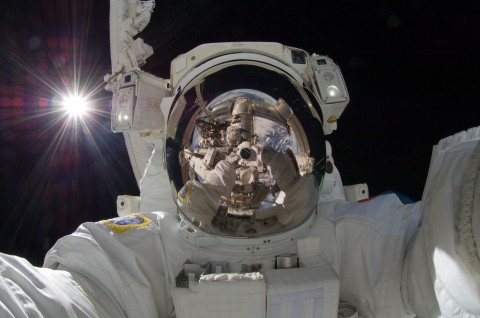Reality television has been around since at least the late ’40s. First we had Candid Camera, where hapless, but real, people became the unwitting butt of Allen Funt’s jokes. But it wasn’t until fifty years later that the genre exploded, bringing us Big Brother and, of course, Survivor.
Now, make way for the unbelievable and ultra-expensive marriage of reality television and science fiction. Mars One, the brainchild of Dutch entrepreneur Bas Lansdorp, plans to establish a permanent human settlement on the red planet in 2023. First, four people would land on Mars. Every two years, another group of people would arrive. The trips would be one-way and all the settlers would live out the rest of their lives on Mars. Funding for the first phase is estimated at $6 billion.
Mars One backers say raising $6 billion will be easy. Every four years the Summer and Winter Olympics generate millions of dollars in revenue because people all over the world want to watch. The Olympics held in 2005 and 2008 together made nearly $5.5 billion from programming and sponsorship.
So, what if there were an event so fascinating, so unprecedented and amazing, that literally every television, computer, and smart device would be tuned in to watch? What if the entire Mars mission was an international reality television show? That’s the plan. Everything from the selection of the first group of astronauts to the launch, landing, and daily life on the red planet would be televised. The audience even gets to vote on the final four space travelers.
Interested? Mars One has issued its requirements for astronaut selection. No military, flight, or science experience required. Applicants must be at least 18, in good mental and physical health, and willing to devote eight years to training before beginning the journey to their new home planet. Finding this hard to believe? The first question in Mars One’s FAQ page sort of says it all. Is this for real? Yes, the plans are for real. Whether any or everything Mars One imagines actually takes place is anybody’s guess.
What’s certain is that Mars is a hot destination at the moment, and not just for aspiring reality stars. SpaceX funder and billionaire Elon Musk wants to build a city for 80,000 on Mars. While accepting an award from the Royal Aeronautical Society, Musk outlined his vision to charge $500,000 per person to transport people to the new Martian city. He’s mentioned wanting to retire on Mars and is using SpaceX as a lab to develop new interplanetary rocket technology.
But you don’t need to be rich or popular to see some of the red planet. There’s also plenty of exploring to do on the surface of Mars from home. Citizen scientists can help Planet Four identify fans and blotches in images of the Martian surface. The pictures come from a camera aboard the Mars Reconnaissance Orbiter, a NASA mission to orbit Mars and transmit images and data to Earth using a powerful radio frequency called the “Ka-band,” which works like an interplanetary Internet.
Using simple marking tools, users can mark the surface colorations and spots that help scientists study changes in the planet’s weather. So-called “spiders” of dry ice form on the planet’s poles in the winter and then lead to fan-shaped moisture footprints.
It’s fun to imagine that the data you create could bring us closer to our distant neighbor planet. Unless of course you’d rather suit up and start training to go there yourself. In that case, good luck and start saving.
Kate Rix writes about digital technology and education. Read more of her work at .
 On Friday, the world had its eyes focused on the big asteroid flyby. For weeks, we knew it was coming, and we watched it buzz by with mild curiosity. But, that same day, we were all caught off guard by a ten-ton meteorite that blasted into the Siberian town of Chelyabinsk, injuring 1,200 people and causing considerable structural damage. (Watch footage here.) This abrupt and unexpected event has given governments a reason to start taking the risk of asteroid impacts a bit more seriously. And it might renew interest in a tool created by scientists at Purdue University and Imperial College London in 2010.
On Friday, the world had its eyes focused on the big asteroid flyby. For weeks, we knew it was coming, and we watched it buzz by with mild curiosity. But, that same day, we were all caught off guard by a ten-ton meteorite that blasted into the Siberian town of Chelyabinsk, injuring 1,200 people and causing considerable structural damage. (Watch footage here.) This abrupt and unexpected event has given governments a reason to start taking the risk of asteroid impacts a bit more seriously. And it might renew interest in a tool created by scientists at Purdue University and Imperial College London in 2010.

